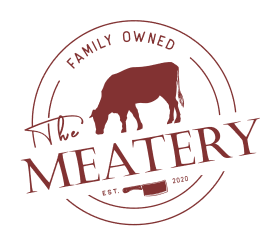Well to begin, The American Wagyu Association (AWA) was established in 1990 to promote and protect the growth of Wagyu cattle breeding in the United States. The journey of American Wagyu began in 1976 when the first four Japanese Wagyu bulls were imported to the U.S., marking the beginning of a transformation in American premium beef production.
The AWA maintains the largest Wagyu cattle registry outside of Japan, ensuring the genetic integrity and purity of American Wagyu bloodlines. Their mission encompasses several key objectives:
- Maintaining accurate breeding records and genetic data
- Promoting the superior qualities of Wagyu beef
- Supporting research and development in Wagyu breeding
- Educating producers and consumers about Wagyu standards
Through careful breeding programs and strict guidelines, American ranchers have successfully adapted Japanese Wagyu genetics to U.S. production systems. This has resulted in a unique product that combines the legendary marbling of Japanese Wagyu with the robust flavor profiles preferred by American consumers.
Breed Characteristics And Standards
American Wagyu cattle exhibit distinct characteristics that set them apart from traditional beef cattle breeds. These animals are known for their:
- Genetic predisposition to intense marbling
- Slower growth rate and longer feeding period
- Calm temperament
- Superior meat quality traits
The breed standards for American Wagyu focus on maintaining genetic integrity while allowing for crossbreeding to enhance certain traits. There are several recognized categories:
- Fullblood: 100% Japanese Wagyu genetics
- Purebred: Minimum 93.75% Wagyu genetics
- Percentage: At least 50% Wagyu genetics
These standards ensure that American Wagyu maintains its premium quality while adapting to U.S. production environments and market demands.
Is Australian or American Wagyu Better?
The comparison between Australian and American Wagyu is complex, as both countries produce exceptional beef with distinct characteristics. Australian Wagyu typically features:
- More consistent grading standards
- Greater focus on fullblood breeding
- Grass-fed to grain-finished production methods
American Wagyu, on the other hand, offers:
- More diverse flavor profiles
- Greater emphasis on marbling-to-flavor balance
- Various production methods to suit different markets
Neither is definitively "better" - both offer high-quality products that cater to different preferences and market segments. The choice often comes down to individual taste preferences and specific culinary applications.
Wagyu Grading And Marbling
American Wagyu beef employs a unique grading system that combines elements of both Japanese and USDA grading standards. The marbling scores typically range from:
- BMS 4-5: Equivalent to USDA Prime
- BMS 6-8: High-Choice American Wagyu
- BMS 9-12: Premium American Wagyu
Marbling in American Wagyu is characterized by:
- Fine, evenly distributed fat throughout the muscle
- Complex patterns of intramuscular fat
- Lower melting point compared to conventional beef fat
This exceptional marbling contributes to the beef's tenderness, juiciness, and distinctive flavor profile.
Comparison With Japanese Wagyu And USDA Prime
American Wagyu occupies a unique position between traditional USDA Prime beef and Japanese Wagyu. Key differences include:
-
Japanese Wagyu:
- Highest marbling scores
- More stringent production requirements
- Generally more expensive
-
American Wagyu:
- Balance of marbling and beef flavor
- More accessible pricing
- Greater production flexibility
-
USDA Prime:
- Lower marbling scores
- Traditional beef flavor
- Most widely available
What Grade is American Wagyu Beef?
American Wagyu beef typically grades well above USDA Prime, though it uses its own grading system. The grades include:
- Gold Grade: Highest level of marbling, comparable to Japanese A5
- Silver Grade: Exceptional marbling, above USDA Prime
- Bronze Grade: Superior marbling, equivalent to high USDA Prime
These grades reflect the unique qualities of American Wagyu while acknowledging its heritage and premium position in the market. The grading system considers:
- Marbling density and distribution
- Meat color and brightness
- Texture and firmness
- Overall quality characteristics









